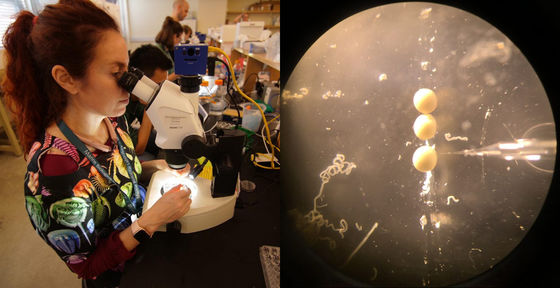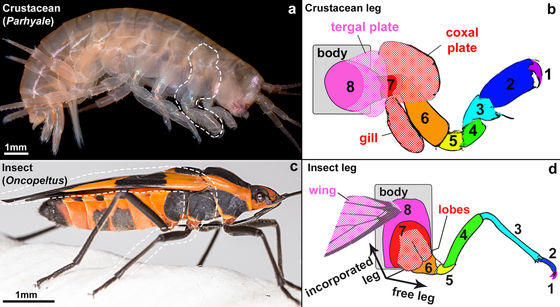Part of the mystery 'How did the insects get their wings?', Which has plagued entomologists for 150 years, is revealed.

by
1870, Mr. Carl Gegenbauer is an anatomist of Germany is ' mayfly was proposed for the first time with the error in the abdomen of aquatic insects such as evolved in the final feather'. For the next 150 years, scientists have been studying ' how did insects get their feathers? ', In which various theories have been proposed, but on December 1, 2020. A paper published in the journal Nature Ecology & Evolution finally reveals some of the mysteries.
Knockout of crustacean leg patterning genes suggests that insect wings and body walls evolved from ancient leg segments | Nature Ecology & Evolution
https://www.nature.com/articles/s41559-020-01349-0

How the Insect Got its Wings: Scientists (At Last!) Tell the Tale
https://www.mbl.edu/wp-content/uploads/2020/11/Bruce-Fig1.pressrelease-768x421.jpg
The mystery of how insects developed wings has finally been solved
https://www.mic.com/p/the-mystery-of-how-insects-developed-wings-has-finally-been-solved-47576183
The authors of the paper published in Nature Ecology & Evolution are Heather Bruce and Nipham Patel, who work as researchers at the Marine Biological Research Institute (MBL) at the University of Chicago. Until now, the ancestors of insects have been assumed to be part of myriapoda such as millipedes and centipedes, but in a research paper published in 2010, insects are genetically more crabs than myriapoda. It has been revealed that it is close to crustaceans such as centipedes and shrimp.
Bruce said of insect wings: 'Study on myriapoda to find out where insect wings come from hasn't made any new discoveries, so insect wings are insect wings. It was considered the first 'new structure' in which ancestors did not have a corresponding structure, but this was because researchers misidentified the ancestors of insects, 'said Insect Wings. He argues that in order to find out how the blues evolved, we should look at genetically close shellfish rather than myriapoda.
So, based on past research, Bruce and Patel used CRISPR-Cas9 , one of the genome editing technologies , to investigate genes in the legs of insects and crustaceans. Using CRISPR-Cas9, the research team disabled five genes associated with insect and crustacean legs, and found that they affected six locations on each leg.

The following is a diagram comparing the leg (b) of the crustacean (a) with the leg (d) of the insect (c). You can see that the structure of the legs of insects and crustaceans is very close. However, if you look closely, the parts 1 to 6 of insects make up the legs, but the parts of crustaceans 1 to 7 make up the legs, which is one more part than the insects. You can see that you have.

If we assume that the ancestors of insects are crustaceans, where did the seventh part disappear in the insects? Bruce and his research team were also interested in this mystery, and it seems that they delved into past research. Then, in a study published in 1893, he discovered what claimed that 'insects incorporated the part of the leg closest to the body into the body wall.' In addition, a study published in 1980 claimed that 'insects not only incorporated the part of the leg closest to the body into the body wall, but also moved it toward the back, eventually forming wings.' It has been found.
'The results of our research using genome editing support the theory proposed in past research papers,' Bruce said. 'The seventh part on the crustacean leg' gradually becomes a body. It concludes that it fuses with the wall, moves from the node of the leg to the back, and eventually becomes the wings of an insect.
The reason why one of the parts that make up the legs of crustaceans has changed to insect wings is that they can support their own weight as crustaceans shift from living on water to living on land. It may be the result of fusing the 7th part into the body.
In addition, Mr. Patel said, 'What emerged from the comparison using genome editing is that completely new things do not suddenly appear in the body. All parts come from somewhere in the body. That's why, 'he said, claiming that this discovery is the body itself using genome editing technology.
Related Posts:







